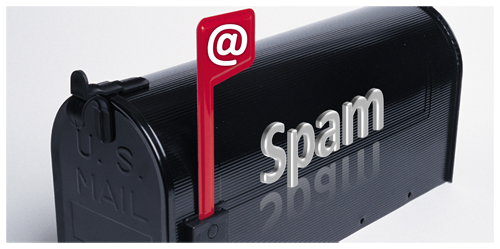Are Your Customers Receiving Your Emails? How to Avoid Being Flagged as Spam.
6th Feb 2013 by

As a retailer, you want to keep in touch with your customers on a regular basis. You take the time to collect their email addresses when they check-out in your store. You give them an option to sign up for your emails on your website. Next you take the time to create a dazzling email announcing your latest sale or newest product arrivals and you hit “send.” How many customers are actually receiving your emails?
In a recent article in the Economist, they cite that the percentage of emails that are considered spam is at about 67%. While that number has dropped in recent years and continues the downward trend, that’s still a lot of customers who might not be receiving your carefully crafted email campaigns.
Why Your Emails Go To Spam-Land
Before you come up with a strategy to ensure you customers are receiving your emails, you need to understand why they’re not. There are a lot of different spam filters and each has slightly different criteria that will throw your email into the spam or junk-mail folder. Incoming mail receives a score for each offense and once the spam threshold is reached, there goes your email. Some of the common mistakes that will get your email flagged as spam include:
- Spammy words or phrases in the subject line or email body – words like “Free” or “Guaranteed,” especially in phrases like “free offer,” or even something like “supplies are limited” are a sure way to get tossed into the spam folder. If that doesn’t sound like a sales pitch, what does? Put those words in all caps and you’re sure to get booted!
- Using all CAPS, fonts in different colors, large sizes or exclamation marks!!!!! - Using all caps or exclamation marks is like shouting in email. Who wants that?
- Using “gappy” text to try to fool spam filters – F.r.e.e. is still Free in the eyes of a spam filter.
- Too high a picture to text ratio – filters typically measure the ratio of text and images. Send an email with one big image and no text, the filter thinks you’re trying to get people to link to something they shouldn’t.
- Sloppy HTML Coding – Be careful about cutting and pasting from Word; sloppy coding makes your email look unprofessional and more likely to get flagged.
There are many more ways to get marked as spam depending on the email filter that’s being used. Each filter is slightly different. But the one thing they do have in common is that they are all getting smarter.
How to Improve Your Email Success
So now that you know some things not to do in your emails, here are some things you can do to improve your chances of getting through to your customer.
- Create your emails and subject lines with careful thought to your content. Avoid those spammy words and phrases.
- Balance the amount of text with the images.
- Send both HTML & plain text options. Remember, if the recipient disables images, all they will see is a blank page.
- Use a “Double Opt-In” method – If a client signs up to be on your email list online, send them an email asking them to click on a link to confirm they want to receive your emails. If they click on the link, you now have proof that you have permission. If not, they don’t get added to the list.
- Make sure your email looks professional and is free of typos. If your email doesn’t look professional, people aren’t going to trust your links.
- Send your first email (often a “Welcome” email) very soon after the client subscribes. Wait too long and they may forget that they subscribed.
- Send your emails on a regular basis. You have to find the balance between too little (risk that clients forget they subscribed) and too much (you overwhelm your customer). Let them know up front what they can expect.
Email marketing is a cost-effective, easy way to stay in touch with your customers and keep your business at their top-of-mind awareness. Of course, it’s only effective if they’re reading your emails and that can only happen if they receive them. Do your best to keep your email marketing campaigns compelling, yet low on the spam scale, and you're sure to see a high return.

